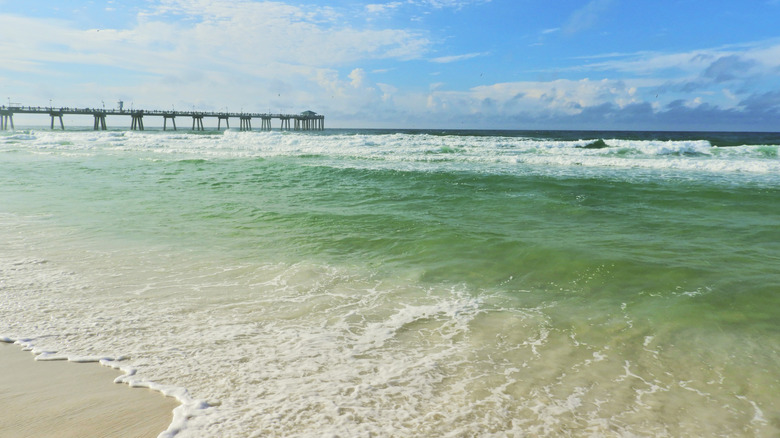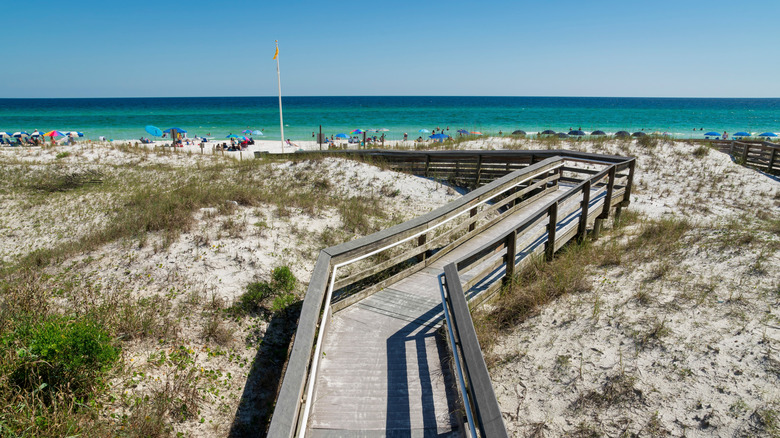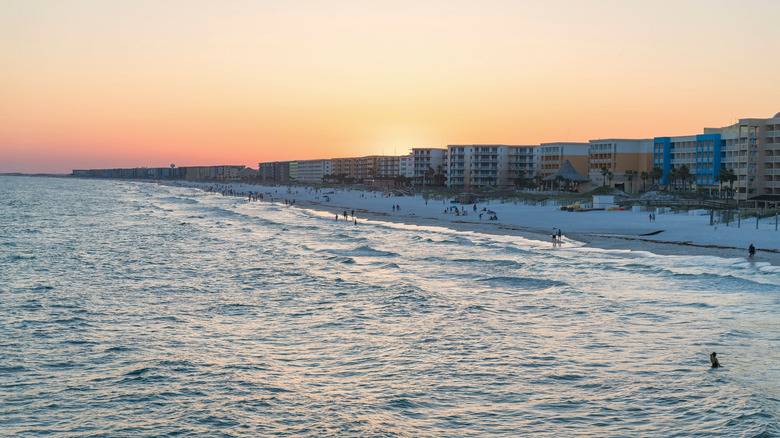Hidden Along Florida's Gulf Coast Is A Paradise Island That Feels Like A Caribbean Getaway With Fewer Crowds
Floridians don't have to venture to the Caribbean to enjoy a tropical getaway. From Pensacola to Fort Walton, some of the best beaches in the Florida Panhandle offer crystal-clear water, sugar-white sand, and copses of swaying palms much the same. Okaloosa Island is one of the state's Emerald Coast gems that'll make waves on par with any Aruba or St. Lucia vacation. This sunny stretch of paradise lies roughly 150 miles west of Tallahassee. Sandwiched between Navarre Beach and Destin, Okaloosa teeters on the eastern edge of Santa Rosa, a 40-mile-long barrier island perched along the lapping waves of the Gulf Coast.
Spanning just shy of 900 acres, Okaloosa Island may be small, but that doesn't mean it's lacking in seaside adventure. It has 3 miles of sandy shoreline, a lively waterfront boardwalk, and a massive pier. Not to mention, it usually sees fewer crowds because of its distance from some of Florida's must-visit islands along the Gulf.
And whether you're local or coming in from out of state, Okaloosa is pretty easy to get to. There are several airports nearby if you need to fly in, including the Destin-Fort Walton Beach Airport, the Northwest Florida Beaches International Airport, and the Pensacola International Airport, all of which are less than 60 miles away. You'll also find plenty of hotels and resorts on the island. The Island Resort at Fort Walton Beach comes top-rated on Tripadvisor, along with more familiar brands like the Holiday Inn, Hilton Garden Inn, and Four Points by Sheraton.
Beach happy on Okaloosa Island
Pack your sunblock and flip-flops because Okaloosa Island's Caribbean-esque sands and emerald green waters are calling your name. The Okaloosa Day Use Area, which is open year-round from 8 a.m. to sunset, has a picnic area with tables and charcoal grills if you want to enjoy a lunch by the Choctawhatchee Bay.
The Day Use Area also has outdoor showers if you want to rinse off after your ocean dip, as well as a slipway if you want to hit the water in a boat, kayak, or canoe. You'll have to pay an entrance fee to visit. It's $25 per car ($15 if you walk or cycle in) at the time of writing, and it's valid for up to seven days. Keep in mind that vehicles, pets, and glass are not permitted on the beach, and you'll also want to steer clear of the shorebird enclosures and the sand dunes, which act as a natural buffer during tropical storms. Instead, use the designated paths and elevated walkways to access the beach.
Take a stroll along the Boardwalk, which has a large collection of gift shops and waterfront restaurants, including the Crab Trap and Floyd's Shrimp House. From the Boardwalk, you can also access the Island Pier, which reaches out into the Gulf's waters for over 1,200 feet. In addition to stellar sunset views, you may also be able to catch sight of dolphins and sea turtles, so keep your eyes peeled. Off the market and getting hitched? You can plan the perfect beach wedding at John Beasley Park, which has not one, but two designated areas overlooking the Gulf for a coastal ceremony.
Best time to visit Okaloosa for fewer crowds
Okaloosa Island is a dream. Take it from one past beachgoer, who raved on Tripadvisor: "I love the small town laid back vibe of this island! Great atmosphere, great food and beautiful clean beaches. Didn't want to leave." Desiring that Caribbean island feel without all the crowds? Okaloosa is undeniably beautiful any time of year, but most people flock to this Sunshine State retreat during the spring and summer months. The island tends to slow down in the autumn, making for a much quieter beach getaway. The temperatures are still favorable in the fall, for the most part, with plenty of warm and sunny days if you want to bask along the shore. Just remember that the Atlantic hurricane season spans from June 1 until November 30 each year, so be sure to stay up-to-date on the weather and plan your trip accordingly.
You'll also want to pay attention to the beach advisory flags. A green flag means there are calm conditions, but you should still exercise caution if you get in the water. A yellow flag indicates moderate surf or current, while a red flag means a high hazard, with strong surf or currents. If you see a double red flag, don't plan on having any fun in the water. Unfortunately, that advisory means the water is closed to the public due to extremely dangerous conditions. Last but not least, a purple flag means there is dangerous sea life swimming about, such as stingrays or jellyfish, so you'll want to keep an eye out if you choose to get in the water.


